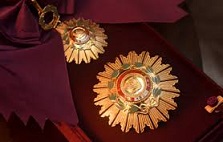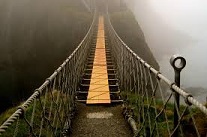Machu Picchu Yale artifacts controversy arose as the Peruvian government actively sought the return of Machu Picchu’s artifacts that were taken to the Yale University, United States in 1911 by Hiram Bingham, the re-discoverer of the mystic site. Read our guide for more facts and information…
Machu Picchu and the history of the Inca Empire have drawn the attention of travelers throughout the world. The renowned Inca site, situated at a height of 2,430 meters above sea level has often been called ‘The Lost City of the Incas.’ It was revealed to the world by Hiram Bingham, a historian, who rediscovered the site in 1911 after it had remained hidden for nearly four centuries. The city was declared as a World Heritage Site by UNESCO in 1983 and acquired a place in the New Seven Wonders of the World in 2007. However, Peru and Yale University held controversies over the possession of its artifacts for nearly 100 years after its rediscovery.
Yale University’s possession of the artifacts
After Hiram Bingham, a historian and professor at Yale University, discovered the lost city of Machu Picchu in 1911, he took many of the artifacts from this Inca citadel to the University. His large expeditions from 1911 to 1915 were jointly backed by the Yale University and the National Geographic Society. These artifacts included jewelry, silver statues, ceramics and human bones, numbering to around 43,000 pieces. Yale has retained possession of these, stating that Peru lacked the infrastructure and facilities to house and maintain the precious artifacts.
Peruvian decrees about the artifacts
Exportation of the artifacts was prohibited by Peruvian law. Bingham had gone through the right legal channels and an agreement was signed between Yale and the Peruvian government, but the exception made on the export ban has been the center of the legal battle concerning the return of the artifacts. In 1912 and 1916, Bingham lobbied for decrees that they could be temporarily removed from the site for studies and returned in 1918. As per the decrees, the artifacts are Peru’s property. Even the National Geographic Trustees agreed that Peru had legal right over the pieces, but Yale refused to return them on grounds that Peru did not have a proper museum to display them. Yale, itself, had stored some of them in a warehouse, and displayed others in its Peabody Museum.
Peru’s measures
Between 2001 and 2006, the Peruvian government actively sought the return of its artifacts from the Yale University. To this end, the administration planned to file a complaint against the University through Columbia’s District Courts. At this junction, Yale’s new President held negotiations on the issue and Peru dropped the suit. In 2007, they signed an agreement, wherein a joint custody was agreed upon to safeguard the artefacts, along with a joint traveling expo sponsorship. It was decided that a new museum would be constructed at Cusco. Though Yale would have rights over the pieces for further study, it had to acknowledge that Peru had complete ownership of the collection. As per the agreement, after the museum construction in Peru reaches completion, the pieces would be sent back to Peru along with a part of what was set apart for research.
It was only in 2010, as the 100th year of Machu Picchu’s rediscovery was nearing, that a final agreement was drawn between Yale University and Peru, stating that the whole collection of archaeological findings would be sent back to Peru and kept in Cusco, beginning from 2011.





